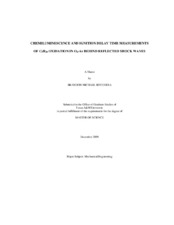| dc.description.abstract | Stemming from a continuing demand for fuel surrogates, composed of only a few species, combustion of high-molecular-weight hydrocarbons (>C5) is of scientific interest due to their abundance in petroleum-based fuels, which contain hundreds of different hydrocarbon species, used for military, aviation, and transportation applications. Fuel surrogate development involves the use of a few hydrocarbon species to replicate the physical, chemical, combustion, and ignition properties of multi-component petroleum-based fuels, enabling fundamental studies to be performed in a more controlled manner. Of particular interest are straight-chained, saturated hydrocarbons (n-alkanes) due to the high concentration of these species in diesel and jet fuels. Prior to integrating a particular hydrocarbon into a surrogate fuel formulation, its individual properties are to be precisely known. n-Nonane (n-C9H20) is found in diesel and aviation fuels, and its combustion properties have received only minimal consideration.
The present work involves first measurements of n-C9H20 oxidation in oxygen (O2) and argon (Ar), which were performed under dilute conditions at three levels of equivalence ratio (phi = 0.5, 1.0, and 2.0) and fixed pressure near 1.5 atm using a shock tube. Utilizing shock waves, high-temperature, fixed-pressure conditions are created within which the fuel reacts, where temperature and pressure are calculated using 1D shock theory and measurement of shock velocity. Of interest were measurements of ignition times and species time-histories of the hydroxyl (OH*) radical intermediate.
A salient pre-ignition feature was observed in fuel-lean, stoichiometric, and fuel-rich OH* species profiles. The feature at each equivalence ratio was observed above 1400 K with the time-of-initiation (post reflected-shock) showing dependence on phi as the initiation time shortened with increasing phi. Relative percentage calculations reveal that the fuel-rich condition produces the largest quantity of pre-ignition OH*. Ignition delay time measurements and corresponding activation energy calculations show that the phi = 1.0 mixture was the most reactive, while the phi = 0.5 condition was least reactive. | en |


